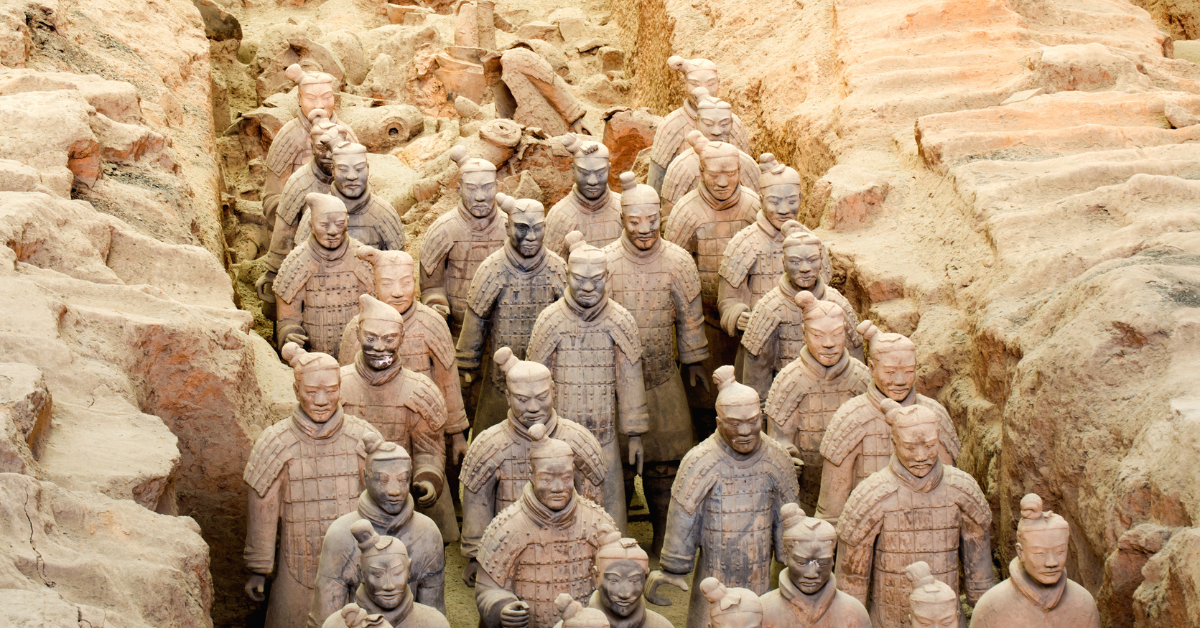Xi’an is one of China’s most famous ancient capitals, and for Japanese people it is strongly connected with “Chang’an” and the “Silk Road.” The city is not only admired for its historical heritage but also valued for its modern development, cultural influence, and growing role as a sports hub.
The Typical Impressions Japanese People Have of Xi’an
For Japanese people, Xi’an is primarily recognized as “the center of Chinese history.” Through school education and travel guides, it is associated with historical symbols such as the Terracotta Army and the Giant Wild Goose Pagoda.
| Japanese Image | Description | Related Elements |
|---|---|---|
| Historic Capital | Flourished as the capital of Qin and Tang dynasties | Terracotta Army, Giant Wild Goose Pagoda |
| Starting Point of the Silk Road | Gateway for east-west trade | Dunhuang, Central Asia |
| Influence on Japanese Culture | Model for Japan’s legal system and city planning | Envoys to Tang, Buddhism |
| Tourism Hub | World heritage and gourmet culture | City Wall, Muslim Quarter |
| Sports City | Venue for international competitions | Shaanxi Provincial Stadium, Xi’an International Marathon |
Xi’an as a Historic Capital
For Japanese people, Xi’an holds a unique place as “a city they learned about in history and can now visit in person.” The Terracotta Army of the First Emperor of Qin impresses with its overwhelming scale, while Tang-era Chang’an symbolizes prosperity as an international city.
Japan’s ancient capitals Nara and Kyoto are believed to have been modeled after Chang’an, creating a sense of historical connection. Furthermore, the fact that Japanese monks brought back Buddhist scriptures from Xi’an fosters cultural familiarity.
Gateway of the Silk Road
Xi’an is also ingrained in Japanese minds as “the starting point of the Silk Road.” As a hub of trade and cultural exchange, it represents the encounter of civilizations. Japanese travelers often visit Xi’an not just for sightseeing but to experience “the stage of ancient cultural exchange.”
| Silk Road Image | Meaning for Japanese People | Related Tourist Sites |
|---|---|---|
| Stage of Cultural Exchange | Buddhism and systems transmitted to Japan | Giant Wild Goose Pagoda, Qinglong Temple |
| Gateway of Trade | Contact point with western culture | West Gate of the City Wall |
| Symbol of Romance | A journey to retrace history | Silk Road Museum |
Popular Tourist Spots Among Japanese Travelers
Xi’an’s attractions are valued by Japanese visitors because “they match what they learned in history with what they experience locally.”
- Terracotta Army: A UNESCO site with overwhelming presence
- City Wall: Cycling along the ancient defense line is especially popular
- Giant Wild Goose Pagoda: Symbol of Buddhist culture
- Muslim Quarter: Famous for its vibrant street food
| Tourist Spot | Feature | Reason Popular with Japanese Visitors |
|---|---|---|
| Terracotta Army | Mausoleum guardians of the First Emperor | Bringing textbook knowledge to life |
| City Wall | 14 km-long defense structure | Blend of history and experiential tourism |
| Giant Wild Goose Pagoda | Center of Buddhist scripture translation | Tied to Japanese Buddhist history |
| Muslim Quarter | Vibrant food culture | Unique cultural experience through cuisine |
Xi’an as a Gourmet City
For Japanese people, Xi’an’s food represents “a unique culinary experience.” Dishes like Lamb Paomo and Biangbiang Noodles are particularly memorable, making cuisine one of the highlights of traveling to Xi’an.
| Dish | Feature | Japanese Impression |
|---|---|---|
| Lamb Paomo | Bread crumbled into mutton soup | Fresh and unusual eating style |
| Biangbiang Noodles | Known for its complex Chinese character and thick noodles | Trendy and visually appealing for social media |
| Sesame Cakes | Wheat-based street food | Perfect for casual eating |
Xi’an as a Modern Metropolis
While Xi’an is a historic city, it has also grown as “a research hub in western China.” With IT industries and many universities, it has a youthful atmosphere. For Japanese people, this creates the impression of “a city where ancient traditions and modern innovation coexist.”
Xi’an as a Sports City
In recent years, Xi’an has gained recognition as a sports city. The “Xi’an International Marathon” attracts runners from around the world, connecting sports with tourism.
- Shaanxi Provincial Stadium hosts international soccer matches
- Global sporting events bring more foreign visitors
- The marathon resonates with Japanese people, as running culture is popular in Japan
Thus, the growing role of Xi’an as “a dynamic modern city through sports” is a fresh discovery for Japanese travelers.
The Charms and Challenges Japanese People See in Xi’an
Japanese people view Xi’an as a fascinating city but also note certain challenges.
| Aspect | Charm | Challenge |
|---|---|---|
| Tourism Resources | Combination of heritage and modern culture | Overcrowding at major sites |
| Food Culture | Unique dishes not found elsewhere | Lack of Japanese-language menus |
| Transportation | Convenient rail and airport access | Language barrier during travel |
| Sports | Host of international events | Limited global recognition |
Conclusion
For Japanese people, Xi’an is at once a “historic capital,” a “source of cultural influence,” and a “modern city full of vitality.”
- Terracotta Army and Chang’an as studied in school
- Role as the Silk Road’s starting point, symbolizing international exchange
- Distinctive food culture offering memorable experiences
- Growth as an IT and education hub
- Stage for sports events and global interaction
Together, these impressions shape Xi’an into a city where Japanese visitors feel they can “experience the past and present at the same time.”






